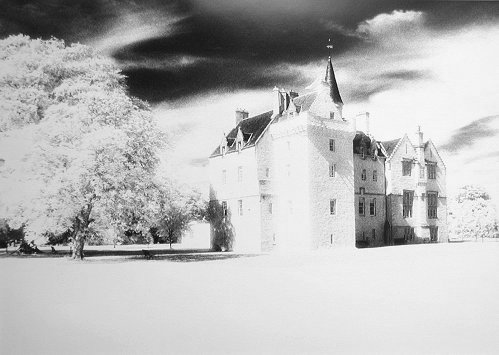Brodie Castle

Copyright 1996 Catriona Fraser
Limited Edition of 100



This astounding castle stands surrounded by rich Morayshire parkland. It is the ancestral home of the Brodies of Brodie. The Brodies claim to be one of the original Pictish tribes of Moray, and the name and clan has always been associated with that area. However, some researchers believe the name may be associated with the Angle-Saxon word "Brothie," which means "dyke" and thus not a Pictish name at all.
King Malcolm IVconfirmed land on the Brodies of Moray in the early 12th century and Michael, Thane of Brodie (A Thane was a Pictish or Celtic title, equivalent to the Norman title of Baron), received a charter from King Robert The Bruce of Scotland shortly before the Scots brutalized the ivading English armies at the Battle of Bannockburn.
Recorded history on the clan is very scarce since in 1645 all records were destroyed when the castle was burned by Lord Lewis Gordon of Clan Gordon in the religious conflict of the Covenanters. As a result, nearly all the early records about the clan have almost disappeared; however, one document was discovered in 1972 in a pigeon loft. This was a bishop's office book in vellum, dating from the year 1,000, less than a century from the establishment of a Scottish lineage in the ancient lands of the Picts.
Nonetheless, the Brodie clan and family have always been prominent in both local and national affairs. Alexander Brodie of Brodie was appointed Lord Lyon King of Arms in 1727 and throughout the long history of the family there has been connections through marriage with many of Scotland's greatest families. One black sheep member of the family, who was notorious for his evil character is Deacon William Brodie. He lived in Edinburgh in the 18th century, and was quite respectable by day. At night he was quite a skilled thief; however, he was eventually caught and hanged in 1788 by a hanging device which he had invented!
The castle, now restored, is the seat of the clan chief. The lime building is a typical 'Z' plan tower house with ornate corbelled battlements and bartizans, with 17th and 19th century additions.
This photograph is a brilliant example of the surreal effects which sunlight and vegetation produce in infrared film.

